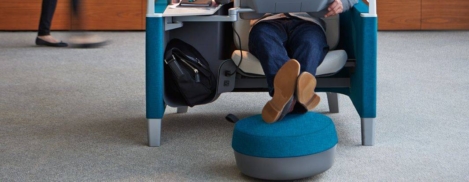January 12, 2016
‘Barrier Bosses’ preventing progress in gender equality despite wide support 0
 More men than women believe that equality between the sexes would be better for the UK economy and themselves. Yet despite finding a clear desire for equality, the forthcoming ‘Sex Equality – State of the Nation’ report by the Fawcett Society reveals that there are still significant barriers to progress that need to be overcome. Overall men are more likely to support equality of opportunity for women than women, with 86 percent of men wanting this for women in their lives, compared to 81 percent of women wanting it for themselves. But the survey identified two major barriers to progress – firstly a small but powerful group of ‘barrier bosses’ responsible for recruitment decisions, and secondly the fact that most people believe that men at the top won’t voluntarily move over for women. This year the Government plans to implement Section 78 of the 2010 Equality Act which will require all employers of over 250 people to publish their gender pay gap.
More men than women believe that equality between the sexes would be better for the UK economy and themselves. Yet despite finding a clear desire for equality, the forthcoming ‘Sex Equality – State of the Nation’ report by the Fawcett Society reveals that there are still significant barriers to progress that need to be overcome. Overall men are more likely to support equality of opportunity for women than women, with 86 percent of men wanting this for women in their lives, compared to 81 percent of women wanting it for themselves. But the survey identified two major barriers to progress – firstly a small but powerful group of ‘barrier bosses’ responsible for recruitment decisions, and secondly the fact that most people believe that men at the top won’t voluntarily move over for women. This year the Government plans to implement Section 78 of the 2010 Equality Act which will require all employers of over 250 people to publish their gender pay gap.















 A new meta analysis compiled by researchers from Harvard Business School and Stanford University raises questions about the way Government and organisational policies designed to tackle the problems of work related health costs in the United States have largely ignored the health effects of ‘psychosocial workplace stressors’ such as high job demands, economic insecurity, and long work hours. The analysis of 228 existing studies assessed the effects of ten workplace stressors on four specific health outcomes. The researchers claims that job insecurity increases the odds of reporting poor health by about 50 percent, high job demands raise the odds of having a diagnosed illness by 35 percent, and long work hours increase mortality by almost 20 percent. They argue that any policies designed to address these issues should account for the health effects of the workplace environment.
A new meta analysis compiled by researchers from Harvard Business School and Stanford University raises questions about the way Government and organisational policies designed to tackle the problems of work related health costs in the United States have largely ignored the health effects of ‘psychosocial workplace stressors’ such as high job demands, economic insecurity, and long work hours. The analysis of 228 existing studies assessed the effects of ten workplace stressors on four specific health outcomes. The researchers claims that job insecurity increases the odds of reporting poor health by about 50 percent, high job demands raise the odds of having a diagnosed illness by 35 percent, and long work hours increase mortality by almost 20 percent. They argue that any policies designed to address these issues should account for the health effects of the workplace environment.

















January 14, 2016
The growing hysteria around employers’ ability to pry is not justified 0
by Mark Eltringham • Comment, Legal news, Technology, Workplace
(more…)